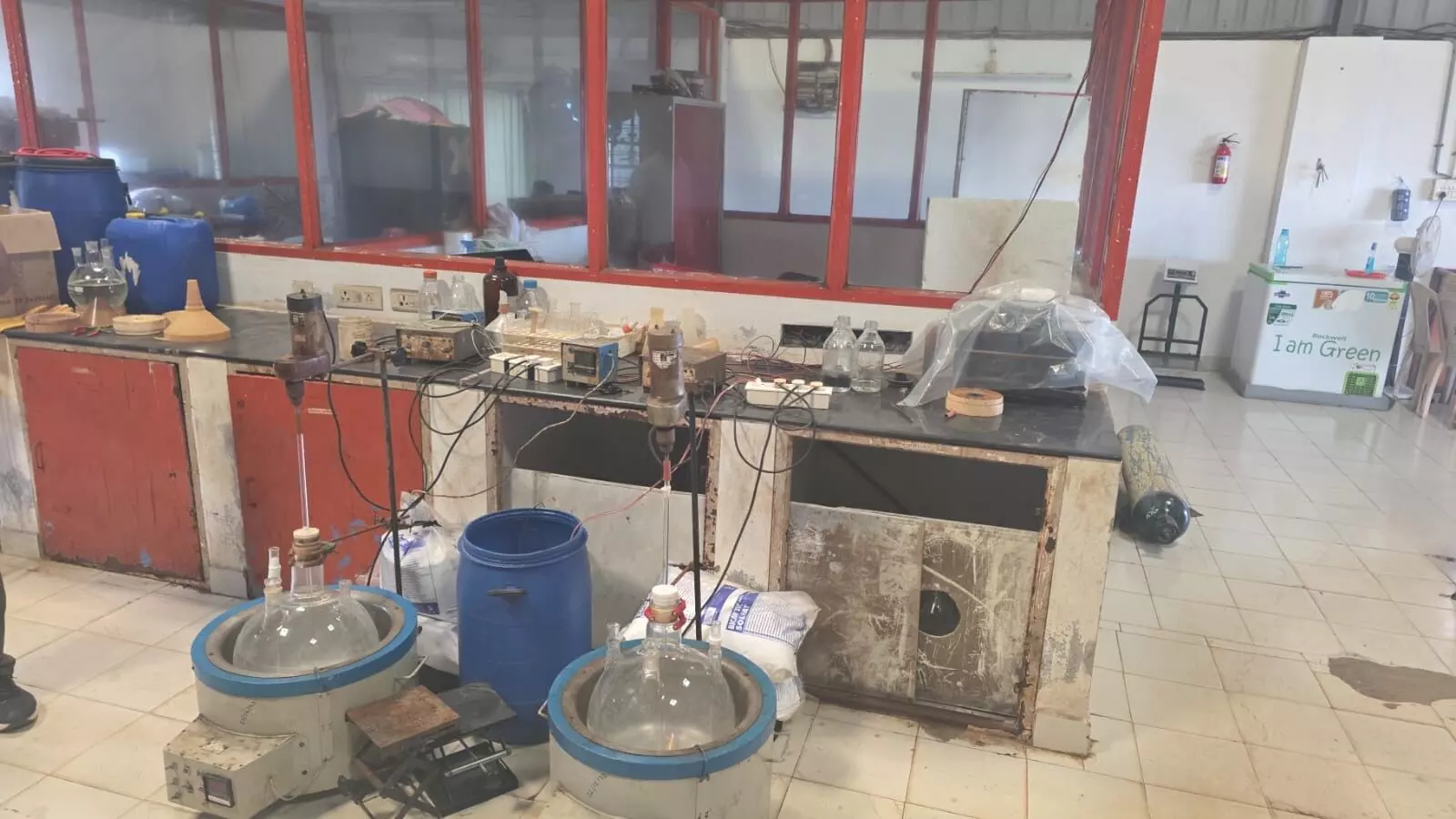Cherlapally drug-manufacturing case: Police shift two suspects to Mumbai
This follows the recovery of nearly six kilograms of mephedrone from a unit masquerading as a chemical factory
By Newsmeter Network
Cherlapally drug-manufacturing case: Police shift two suspects to Mumbai
Hyderabad: Police on Sunday evening shifted two prime suspects in the Cherlapally drug-manufacturing case to Mumbai.
This follows the recovery of nearly six kilograms of mephedrone from a unit masquerading as a chemical factory. The duo will be produced before a local court.
Raid on ‘Chemical Factory’ uncovers synthetic drug
On September 7, acting on intelligence, Mumbai police raided a facility in Cherlapally Industrial Area, discovering 5.968 kg of mephedrone (“meow-meow”), 35,000 litres of chemicals, and 950 kg of precursor powder. The drug is banned under the Narcotic Drugs and Psychotropic Substances (NDPS) Act.
Prime accused had prior brush with NCB
Investigators identified the main accused as Srinivas Vijay Voleti, owner of Vagdevi InnoScience, which has operated since 2015. Voleti had previously been arrested by the Narcotics Control Bureau’s Mumbai unit, securing interim anticipatory bail after no contraband was directly recovered. “That earlier case is still pending,” an officer said.
Legal cover shielded operations earlier
Officials revealed they had earlier attempted a raid but were deterred when the company produced valid trade licences. “They portrayed themselves as a legitimate chemical business, so we devised a plan to catch them red-handed,” the officer explained. The firm had also received a Telangana Pollution Control Board notice in 2020.
Wider arrests and network links
Along with Voleti and his associate Tanhaji, police detained Fatima Murad Shaikh, a 23-year-old Bangladeshi national who allegedly acted as a Mumbai-based street distributor. In all, 12 people have been arrested in the case as the investigation tracks supply channels.
Minister orders probe into alleged Drug Unit in Cherlapalli
Excise Minister Jupally Krishna Rao on Monday directed officials to conduct a thorough inspection of the alleged drug manufacturing facility at Cherlapalli Industrial Area, where narcotics worth Rs 12,000 crore were recently unearthed. He sought a detailed report within 24 hours.
Minister expresses displeasure
Chairing a review meeting, the minister expressed concern over how such large-scale illegal activity went undetected. “From users to suppliers, every link in the chain must be tracked. Smugglers are exploiting migrant workers, students and youth as cover. Strong vigilance at such points is essential,” he observed.
Officials inspect Vagdevi Laboratories
Acting on his orders, senior excise officials inspected Vagdevi Laboratories in Cherlapalli on Monday. The team is expected to submit its report to the minister on Tuesday.
DCA clarifies on Vagdevi Laboratories’ role in Mephedrone Case
The Drugs Control Administration (DCA), Telangana, on Monday issued a clarification regarding the recent seizure of mephedrone linked to Vagdevi Laboratories, Cherlapally. The DCA underlined that the unit is a chemical factory and not a licensed pharmaceutical company.
Not a Drug Licence Holder
Officials clarified that Vagdevi Laboratories does not hold a drug manufacturing licence and cannot be classified as a pharmaceutical firm. “It is only a chemical manufacturing unit,” the DCA stated.
Mephedrone not a medicine
The DCA further explained that mephedrone is not a medicinal product. Since it is not a drug regulated under the Drugs and Cosmetics Act, the substance does not fall within the DCA’s jurisdiction.
NDPS Act agencies in charge
The Administration stressed that the matter comes entirely under enforcement bodies empowered by the NDPS Act, 1985. These include the Police Department, Narcotics Control Bureau (NCB), Directorate of Revenue Intelligence (DRI) and other central or state enforcement agencies.
No Role for DCA
“The DCA has neither the authority nor the mandate to take action or investigate in this case,” the clarification read. The note was issued to avoid misinterpretation of the laboratory’s regulatory status.